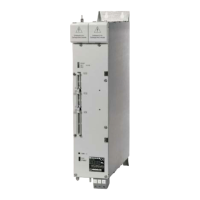8 – 8 HEIDENHAIN Technical Manual TNC 426, TNC 430
8.1.2 Data Transfer Check: Handshaking
By handshaking, two devices control data transfer between them. A
distinction is drawn between “software” and “hardware” handshaking.
You can choose either of the two procedures:
Hardware
handshaking
Data transfer is controlled by electrical signals. Information, such as Clear to
Send (CTS), Request to Send (RTS), “Start transmission” and “Stop
transmission” is passed on by the hardware.
Example:
When a computer is to transmit a character, it checks the CTS signal line to
see whether it is active (ON). If it is, the character is transmitted.
Hardware handshaking requires:
n The data lines TXD and RXD (transmitted and received data)
n The RTS control line (switch on transmitting unit)
n The CTS signal line (Clear to Send)
n A ground connection
Software
handshaking
Control of data transfer is achieved by control characters transmitted via the
data line.
Example: XON/XOFF method with the RS-232-C/V.24 interface
The meaning XON is assigned to control character DC1 and the meaning XOFF
to control character DC3. Before transmitting a character, the computer
checks whether the receiving unit is transmitting the XOFF character. If it is,
the computer delays transmission until it receives the character XON. XON
indicates that the connected unit is ready to receive further characters.
Software handshaking requires:
n The data lines TXD and RXD (transmitted and received data)
n A ground connection

